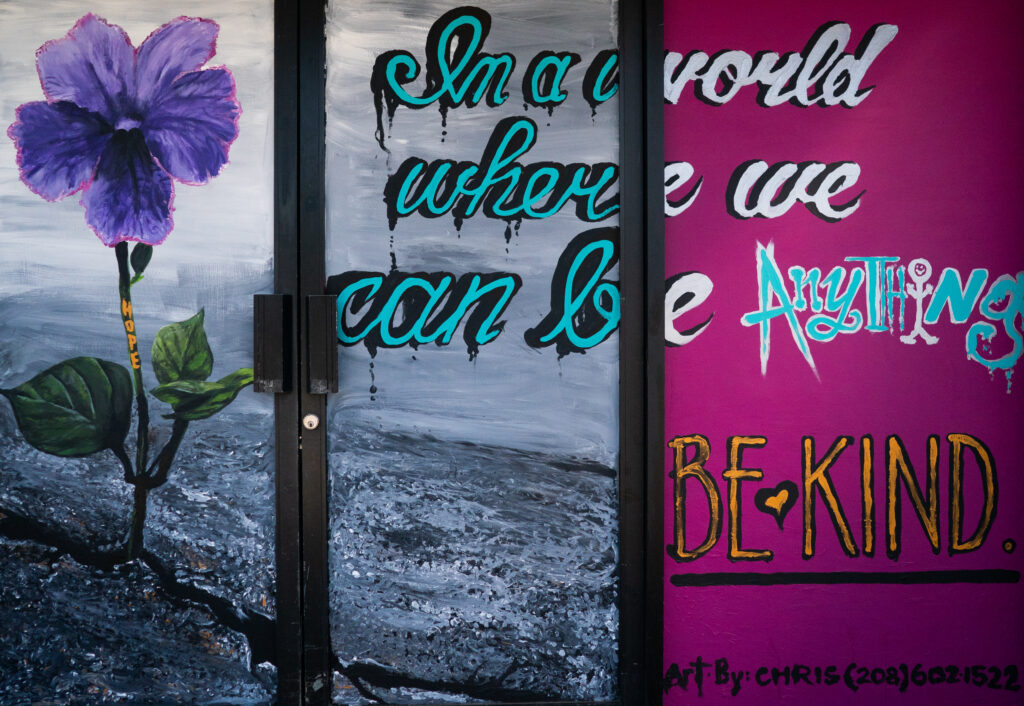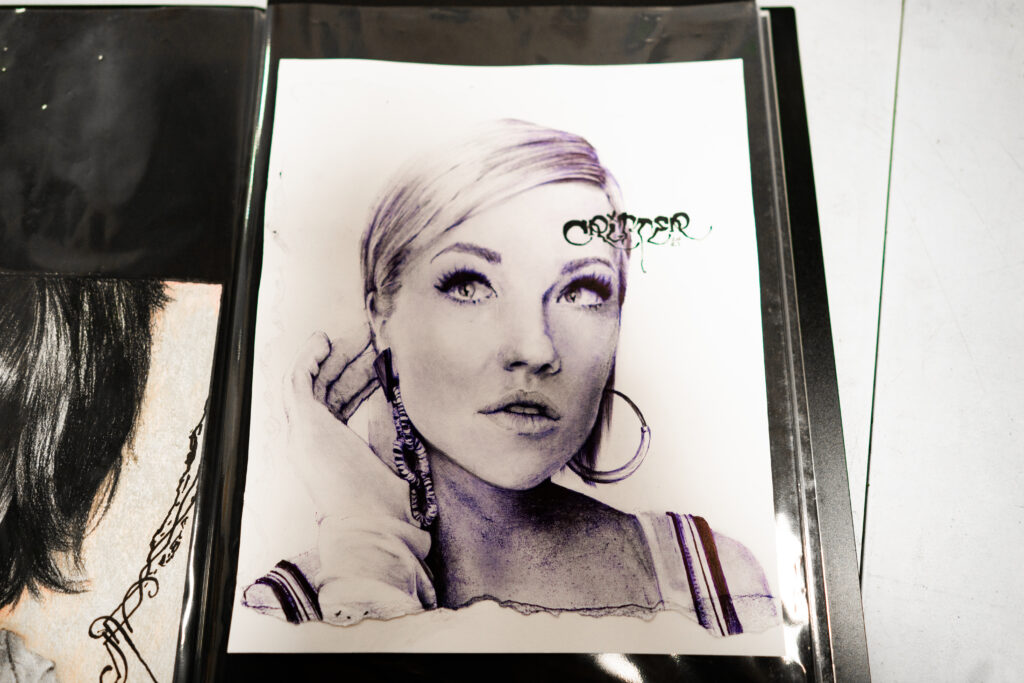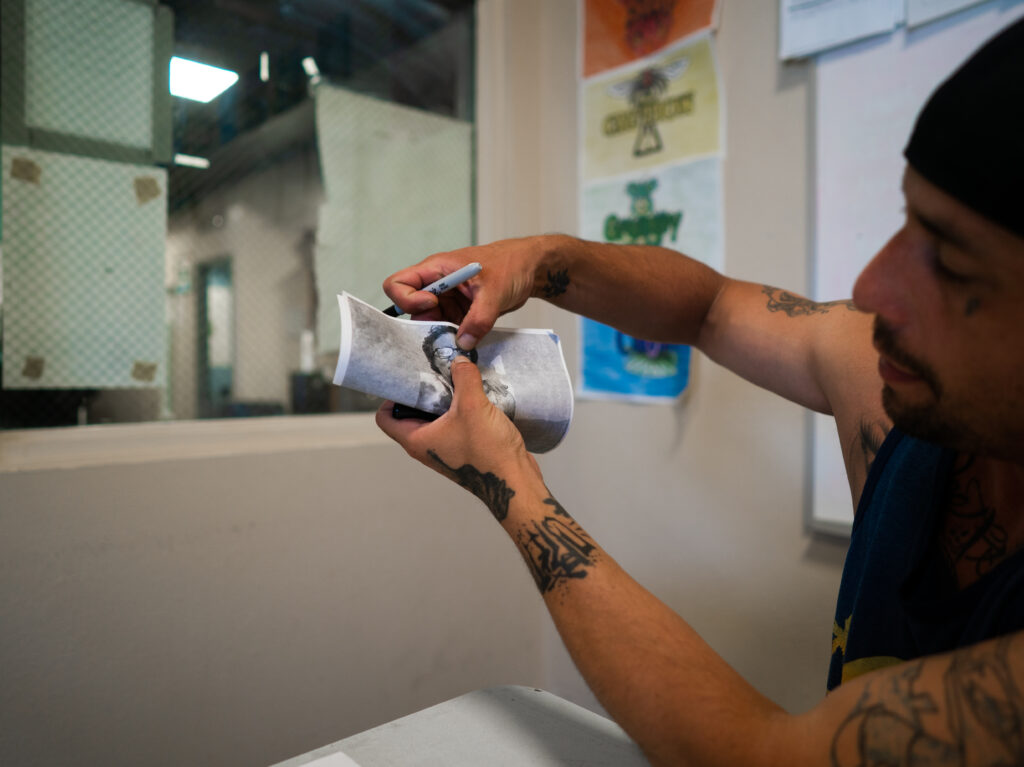Word on the Street Issue 13, August 2021
Chris has been drawing for as long as he can remember. He started in the 2nd grade in San Diego, where seeing graffiti sparked a lifelong impulse to create.
Chris spent his early childhood drawing dinosaurs and robots. As he got older, he transitioned into anime. He remembers creating name tags for his entire class in the 6th grade. At 9 years old, he and a friend tagged the bathroom at their Catholic school. “I don’t even know why we did it, but I got a total rush out of it,” Chris said.
“Graffiti was like looking at a maze with the colors and the lines all over the place, and there was just something strange about it. I thought the bubble and the block letters were fascinating.”

Today, Chris is a familiar face at Interfaith Sanctuary. He’s enrolled in the shelter’s programming and wants to go back to school. In June, a group of staff walks him to the only bank in Boise that allows residents without a permanent address to open a checking account. Chris hasn’t had one in years. “I feel that much closer to normal,” he said to the group as they walked back to the shelter downtown. “Thank you.”
As a teenager, the feeling of being good at something pushed Chris to pursue creative work on his own despite art classes lacking in the public school system. He enrolled in college in San Diego, where he studied painting and drawing for four-and-a-half years. But life got in the way, and a divorce affected him deeply. “I would have finished then, but everything got messed up,” he said. “But, it’s OK.”

Art is a tool to cope for the 39-year-old, and it’s how Chris connects with people. He’s gaining a reputation inside the shelter’s community for his uncannily accurate portraits. He likes the process of detailing the intricacies of the human face and pays close attention to all of them. A recent phone call with an artist from Los Angeles made him realize his interest in the technical aspect of drawing and how that drives his work. “I feel like I’m constantly in creative mode,” he said. “I’ll notice the shape of people’s lips, noses, even the way their teeth are shaped.”
Chris enrolled in programming at Interfaith after he got tired of using meth. The experience of being high wasn’t fun anymore; he would get paranoid and hear voices. Prison time and a final falling out with a group of friends pushed him toward sobriety. After nearly 3 years living in and out of shelters, he decided to take a chance on himself, as well as Interfaith’s Project Recovery.
“I feel like all of you are here for a reason,” he told Interfaith’s Executive Director Jodi Peterson-Stigers in June. Chris said he occasionally saw staff in Cooper Court while he was living unhoused and felt thrown off by the willingness to acknowledge residents. “When you’re homeless, that kindness is kind of shocking. It’s like a bright light,” he said. “There’s not a lot of that out there.”

Chris recently completed a series of t-shirts to honor Donnie, a guest who passed away at Interfaith in June. Each one took him 4 hours to complete, but the work is satisfying. Like Donnie, who loved to wear tye-dye and always said thank you, he pushes forward on his path with a sense of humor.
A woman who is a longtime guest is approved for housing in July and walks into a room where Chris sits, demonstrating how to sketch Donnie’s face. “I’m so excited!” she says as the room cheers. “It’s at the top, so I can watch over you and make sure you’re doing OK.”
Chris jokes back, “That’s cool! I’ll throw eggs over there when I ride my bike to go get sodas!”
The room erupts in laughter. Chris returns to his demonstration, centering the composition before he draws the first eye. He measures the space between Donnie’s eyes and glasses after sketching his hair, neck, and chin. Eventually, he moves into shading. “It’s just shapes, really. You try to find all the shapes, then once you think you’re done, you flip the portrait upside down, and you can see the parts that you’ve missed,” Chris said.

Portraits using pen take the longest. Chris recently started using colored pencils, but he also finds charcoal fast and easy to manipulate, something he learned taking life drawing classes. Using permanent markers on a shirt is easy because they take up a lot of space on the fabric, he said.
On Chris’s hand is a detailed portrait of Rebecca Ferguson from the movie Doctor Sleep. “Her face reminded me of one of those silhouettes you see in someone’s house,” he said, pointing out imperfections in the composition. “I drew the portrait on paper, then I put it on a piece of stencil, and I put the stencil on my hand.”
Chris taught himself how to tattoo in prison using a single needle and has since transitioned into working with a machine. Nearly 6 months into his stay at Interfaith, Chris is focused on finding an apprenticeship at a local tattoo shop, a career he feels he’ll excel at and enjoy while he builds up a body of work in his free time.
He describes how he drew each line in detail, the tools he used, and the spots he wants to touch up. “I think I’m going to put some off-white around the whole thing and fade it out,” he said.






